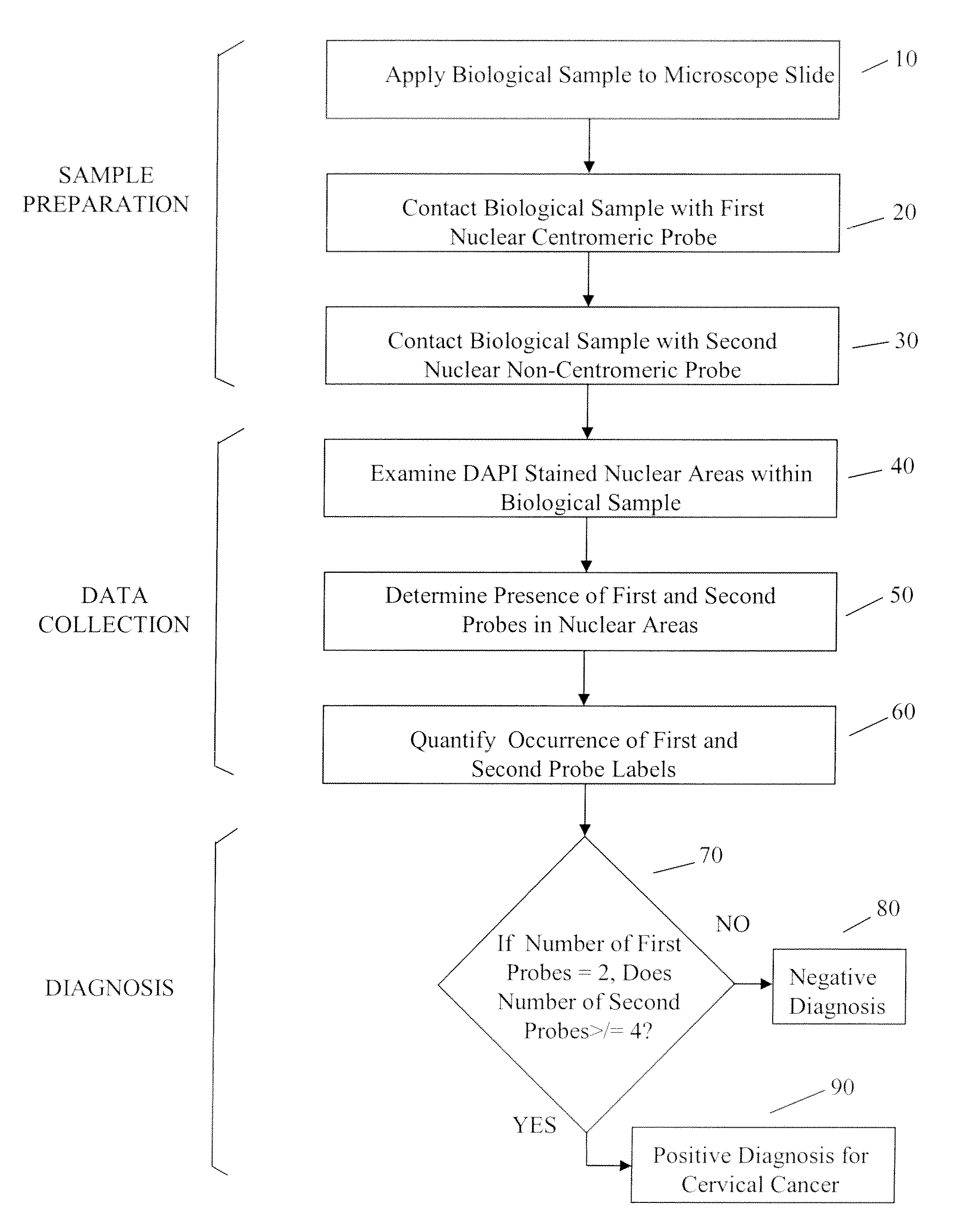Automated method for detecting cancers and high grade hyperplasias
a high-grade hyperplasia and automatic detection technology, applied in the field of automatic detection of cancer and dysplasia, can solve the problems of difficult analysis, long process, human error, and inability to accurately detect abnormal cells, and achieve the effect of quick detection of chromosomal regions and abnormal cells
- Summary
- Abstract
- Description
- Claims
- Application Information
AI Technical Summary
Benefits of technology
Problems solved by technology
Method used
Image
Examples
Embodiment Construction
[0064]As used herein, “tag” and “label” relate synonymously to a moiety conjugated to a probe to render the probe detectable by a particular detection method and modality.
[0065]As used herein “probe” relates generally to a substance specifically designed to bind to a cellular target, and not to bind significantly to cellular moieties or structures not intended to be a target. In several embodiments a probe may be a nucleic acid, polynucleotide or oligonucleotide whose sequence is sufficiently complementary to a target sequence in a cellular chromosome or other nucleic acid to hybridize to the latter structure under appropriate conditions. In various additional embodiments a probe may be an antibody or a portion thereof bearing a specificity determining binding site that specifically targets a cellular structure.
[0066]As used herein “representation” relates generally to any visual, graphical, numerical. or similar assembly of information that characterizes a result obtained using a p...
PUM
| Property | Measurement | Unit |
|---|---|---|
| areas | aaaaa | aaaaa |
| fluorescent | aaaaa | aaaaa |
| microscope | aaaaa | aaaaa |
Abstract
Description
Claims
Application Information
 Login to View More
Login to View More - R&D
- Intellectual Property
- Life Sciences
- Materials
- Tech Scout
- Unparalleled Data Quality
- Higher Quality Content
- 60% Fewer Hallucinations
Browse by: Latest US Patents, China's latest patents, Technical Efficacy Thesaurus, Application Domain, Technology Topic, Popular Technical Reports.
© 2025 PatSnap. All rights reserved.Legal|Privacy policy|Modern Slavery Act Transparency Statement|Sitemap|About US| Contact US: help@patsnap.com


